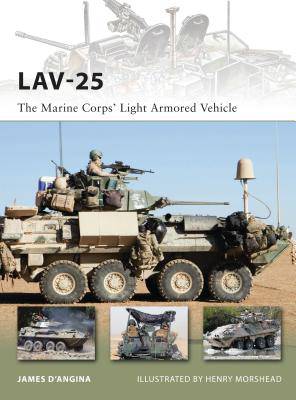
- Afhalen na 1 uur in een winkel met voorraad
- Gratis thuislevering in België vanaf € 30
- Ruim aanbod met 7 miljoen producten
- Afhalen na 1 uur in een winkel met voorraad
- Gratis thuislevering in België vanaf € 30
- Ruim aanbod met 7 miljoen producten
Zoeken
Omschrijving
The Light Armored Vehicle -25 (LAV-25) has played a significant role in transforming Marine Corps doctrine since its introduction in the early-1980s. The Marine Corps Light Armored Vehicle program was based on the proven Swiss MOWAG Piranha series of 4x4, 6x6, and 8x8 wheeled vehicles. However, developing organizational units, tactics, and employment of the weapon system within the force structure of the Marine Corps proved to be more of a challenge than fielding the weapon system. This resulted in multiple re-designations for LAV units within the Corps. The LAV first saw combat action in Panama during Operation Just Cause (1989); LAV-25s have fought in every major conflict since - to include the current conflicts during Operation Enduring Freedom, Afghanistan and Operation Iraqi Freedom, Iraq. During Operation Desert Storm the vehicle's record shows mixed results due to a string of friendly fire incidents; however one LAV-25 Commander earned the Navy Cross (one of only two Navy Crosses awarded to Marines during the Gulf War). The success of the LAV program has translated to several operators such as Canada, Australia, and the Saudi Arabian National Guard employing the weapon system for their own forces. This in-depth, highly-illustrated title will shed new light on this popular subject.
Specificaties
Betrokkenen
- Auteur(s):
- Illustrator(s):
- Uitgeverij:
Inhoud
- Aantal bladzijden:
- 48
- Taal:
- Engels
- Reeks:
- Reeksnummer:
- nr. 185
Eigenschappen
- Productcode (EAN):
- 9781849086110
- Verschijningsdatum:
- 22/11/2011
- Uitvoering:
- Paperback
- Formaat:
- Trade paperback (VS)
- Afmetingen:
- 180 mm x 241 mm
- Gewicht:
- 158 g

Alleen bij Standaard Boekhandel
+ 38 punten op je klantenkaart van Standaard Boekhandel
Beoordelingen
We publiceren alleen reviews die voldoen aan de voorwaarden voor reviews. Bekijk onze voorwaarden voor reviews.











